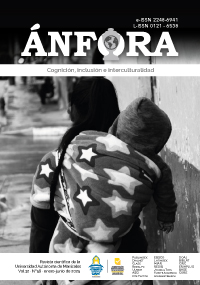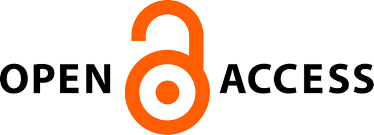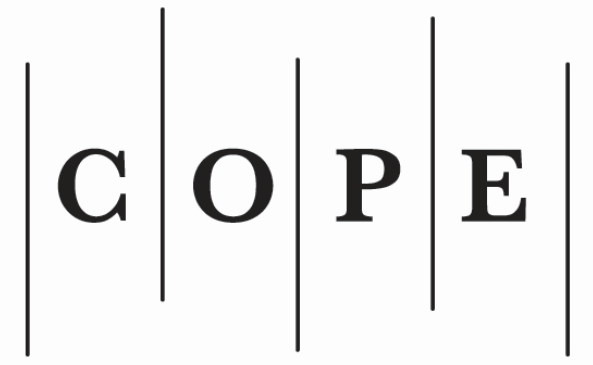Autism, Mirror Neurons, and Being-in-the-World: An Approach from Neurophysiology to Neurophenomenology
Main Article Content
Abstract
Autism has been conceptualized as a neurodevelopmental disorder and as a different form of human cognition. From a neurophysiological perspective, the mirror neuron system (MNS) in autism has been investigated, focusing on measurable data. Neurophenomenology proposes to integrate scientific evidence with subjective experience. Objective: to understand the relationship between subjectivity and the brain, covering the neural processes involved in autism and the first-person experience of a group of children and adolescents from the city of Manizales. Methodology: mixed research, descriptive and inferential, including qualitative information, approached from an interpretive phenomenological approach. 35 children between 6 and 16 years old and 19 control peers participated. Results: autistic participants demonstrated greater heterogeneity in the behavior of the MNS and in their relationship with the world, both with respect to control participants and among themselves. A proposal
for inclusive education called “Neurodiversity” was built, which won second place in the Premio Cívico Retos con los ODS. Conclusions: the importance of integrating neurophysiological evidence with first-person experience was demonstrated, allowing a broad understanding of the object of study and its applications in context.
How to Cite
Downloads
Metrics
Article Details
neurophysiology, mirror neurons, autism, diversity, inclusion
Asociación Americana de Psiquiatría [APA]. (2014). Manual diagnóstico y estadístico de los trastornos mentales. (5.ª ed). Editorial Médica Panamericana. Asperger, H. (1944). Die „autistischen psychopathen“ im kindesalter. Archiv fur psychiatrie und Nervenkrankheiten, 117, 76-136. https://doi.org/10.1007/BF01837709
Baron-Cohen, S. (2013). Autismo y mente técnica. Investigación y ciencia, (436), 78-81. https://www.investigacionyciencia.es/revistas/investigacion-y-ciencia/la-vida-interior-de-los-quarks-566/autismo-y-mente-tcnica-10712
Bernier, R., Aaronson, B., & McPartland, J. (2013). The Role of Imitation in the Observed Heterogeneity in EEG Mu Rhythm in Autism and Typical Development. Brain and Cognition, 82(1), 69-75. https://doi.org/10.1016/j.bandc.2013.02.008
Bernier, R., Dawson, G., Webb, S., & Murias, M. (2007). EEG Mu Rhythm and Imitation Impairments in Individuals with Autism Spectrum Disorder. Brain and Cognition, 64(3), 228–237. https://doi.org/10.1016/j.bandc.2007.03.004
Contreras, F. (2006). Pensar la identidad con Heidegger. La Lámpara de Diógenes: Revista Semestral de Filosofía, 7(12), 74-84. https://www.redalyc.org/pdf/844/84401306.pdf
Duque, H. & Aristizábal, E. (2019). Análisis fenomenológico interpretativo: Una guía metodológica para su uso en la investigación cualitativa en psicología. Pensando Psicología, 15(25), 1-24. https://doi.org/10.16925/23823984.2019.01.03
Fan, Y., Decety, J., Yang, C., Liu, J., & Cheng, Y. (2010). Unbroken Mirror Neurons in Autism Spectrum Disorders. Journal of Child Psychology and Psychiatry, 51(9), 981-988. https://doi.org/10.1111/j.1469-7610.2010.02269.x
Gallagher, S. & Fernández, R. (2020). Pasado, presente y futuro del tiempo de la conciencia: de Husserl a Varela y más allá. Investigaciones fenomenológicas: Anuario de la Sociedad Española de Fenomenología, (17), 295-315. https://dialnet.unirioja.es/servlet/articulo?codigo=7727194
Gallese, V., Kaysers, C., & Rizzolatti, G. (2004). A Unifying View of the Basis of Social Cognition. Trends in Cognitive Sciences, 8(9), 396-403. https://doi.org/10.1016/j.tics.2004.07.002
Hamilton, A. (2013). Reflecting on the Mirror Neuron System in Autism: A Systematic Review of Current Theories. Developmental Cognitive Neuroscience, 3, 91-105. https://doi.org/10.1016/j.dcn.2012.09.008
Heidegger, M. (1988). Identidad y diferencia. Anthropos Editorial.
Heidegger, M. (2003). Ser y tiempo. Trotta.
Husserl, E. (2012). La idea de la fenomenología. Herder.
Iacoboni, M. (2009). Las neuronas espejo. Empatía, neuropolítica, autismo, imitación, o de cómo entendemos a los otros. Katz Editores.
Iriarte, J., Cieza, S., & Urrestarazu, E. (2013). Fundamentos de electroencefalografía. Semiología electroencefalográfica. En J. Iriarte y J. Artieda (Eds.). Manual de neurofisiología clínica (pp. 3-18). Editorial Médica Panamericana.
Kanner, L. (1943). Autistic disturbances of affective contact. Nervous Child, 2, 217-250. https://autismtruths.org/pdf/Autistic%20Disturbances%20of%20Affective%20Contact%20-%20Leo%20Kanner.pdf
Lidell, H. & Scott, R. (1883). A Greek-English Lexicon. Clarendon Press.
Martineau, J., Cochin, S., Magne, R., & Barthelemy, C. (2008). Impaired Cortical Activation in Autistic Children: Is the Mirror Neuron System Involved? International Journal of Psychophysiology, 68(1), 35-40. https://doi.org/10.1016/j.ijpsycho.2008.01.002
Martínez, E. (2009). El diálogo socrático en la psicoterapia centrada en el sentido. Ediciones Aquí y Ahora.
Merleau-Ponty, M. (1994). Fenomenología de la percepción. Planeta-Agostini.
Oberman, L., Hubbard, E., McCleery, E., Altschuler, L., Ramachandran, V., & Pineda, J. (2005). EEG Evidence for Mirror Neuron Dysfunction in Autism Spectrum Disorders. Cognitive Brain Research, 24(2), 190–198. https://doi.org/10.1016/j.cogbrainres.2005.01.014
Palau-Baduell, M., Valls-Santasusana, A., & Salvadó-Salvadó, B. (2011). Trastornos del espectro autista y ritmo mu. Una nueva perspectiva neurofisiológica. Revista de Neurología, 52(1), 141-146. https://neurologia.com/articulo/2010796
Ramachandran, V. S. (2012). Lo que el cerebro nos dice. Los misterios de la mente humana al descubierto. Paidós.
Raymaekers, R., Wiersema, J., & Roeyers, H. (2009). EEG Study of the Mirror Neuron System in Children with High Functioning Autism. Brain Research, 1304, 113-121. https://doi.org/10.1016/j.brainres.2009.09.068
Resolución 8430 de 1993 [Ministerio de Salud]. Por la cual se establecen las normas científicas, técnicas y administrativas para la investigación en salud. Octubre 4 de 1993. https://www.minsalud.gov.co/sites/rid/Lists/
BibliotecaDigital/RIDE/DE/DIJ/RESOLUCION-8430-DE-1993.PDF
Rizzolatti, G. & Craighero, L. (2004). The Mirror-Neuron System. Annual Review of Neuroscience, 27, 169-192. https://doi.org/10.1146/annurev.neuro.27.070203.144230
Safranski, R. (1997). Un maestro de Alemania. Martin Heidegger y su tiempo. Tusquets Editores.
Sánchez, S. (2020). Paradigma de la neurodiversidad: una nueva forma de comprender el trastorno del espectro autista. Revista de Estudiantes de Terapia Ocupacional, 7(1), 19-35. https://revistaschilenas.uchile.cl/handle/2250/146299
Varela, F., Thompson, E. & Rosch, E. (2009). De cuerpo presente: las ciencias cognitivas y la experiencia humana. (4.ª ed). Gedisa.
Zahavi, D. (Ed.). (2000). Exploring the Self: Philosophical and Psychopathological Perspectives on Self-Experience. John Benjamins Publishing Company.

This work is licensed under a Creative Commons Attribution-NonCommercial-ShareAlike 4.0 International License.
Once the manuscript is approved, the authors should file and sign the Right Transfer Format.


 https://orcid.org/0000-0003-0051-0740
https://orcid.org/0000-0003-0051-0740










